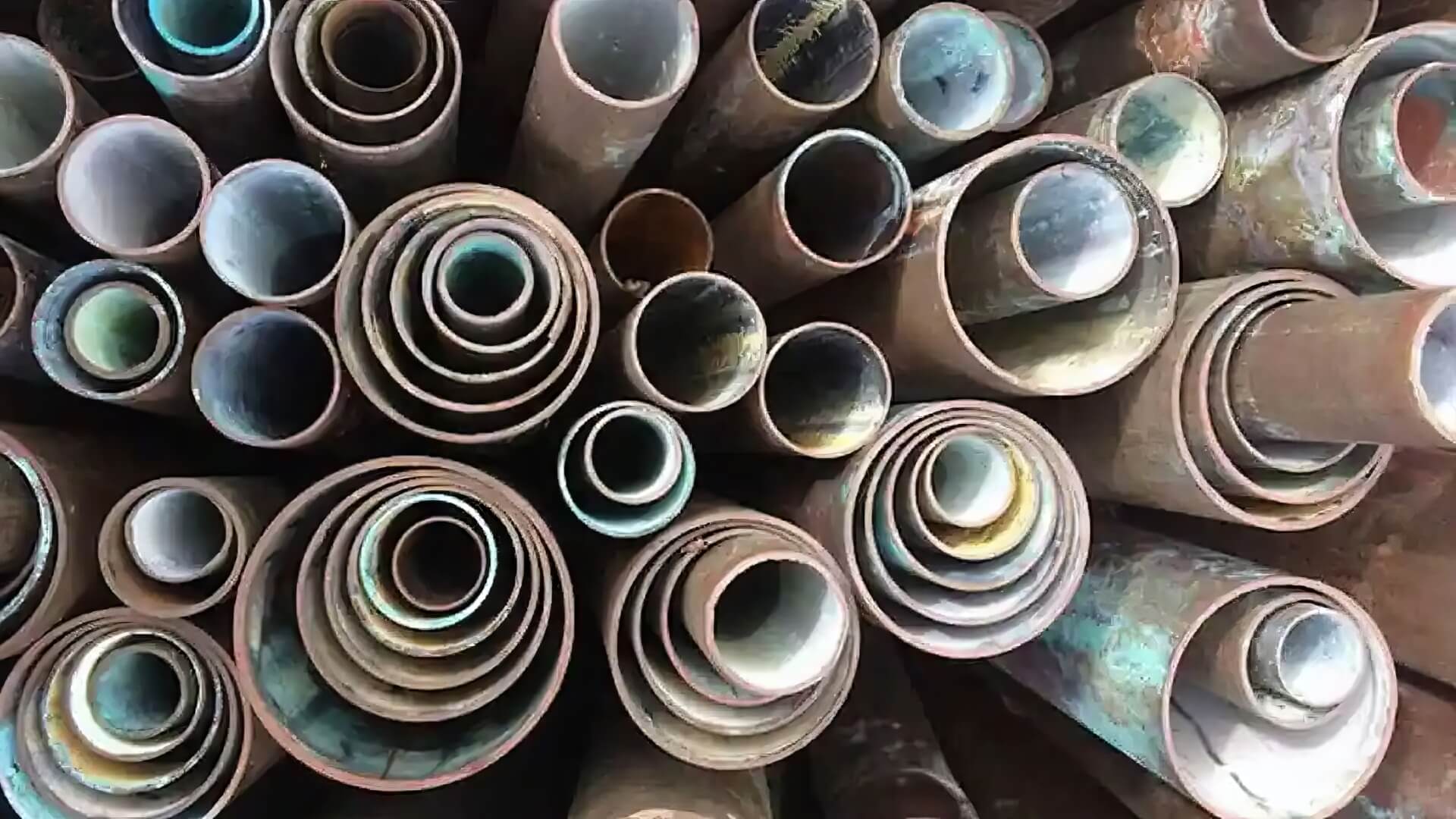
10 Signs Your Hot Water Heater Will Fail
If your water heater is old, leaking, rusty, noisy, not heating water properly or has low pressure, it could fail soon. Get your hot water system inspected today.
Read MoreWhen installing hot water systems in multi-story buildings in Australia, it is crucial to comply with regulations for safety and optimal performance. The key standard is AS/NZS 5601.1 2013, which provides gas installation rules for hot water units.
For mid-rise buildings with 3-8 levels, regulations require gas-powered continuous flow systems to be installed on the topmost floor they service to minimise heat loss. Electric and heat pump hot water systems may be installed on any floor, but top floor placement is preferred. Storage tanks with booster pumps can ensure a steady flow hot water supply on any level.
In high-rise buildings over 25 metres, hot water system regulations depend on the type of unit. Gas systems must only be installed on the highest occupied floor of no more than 25m height they service.
Other types, however, are more flexible in placement; though centrally located systems are still the most efficient. Split systems, such as heat pump configurations with separate condenser units, are often a good high-rise option.
All hot water installations, regardless of the building, must ensure safe access and adhere to the AS/NZS 5601.1 2013 ventilation requirements for effective and compliant operation. Following gas, electrical, plumbing, and fire safety codes keeps occupants safe while ensuring the heating water process in your system is well-functioning and compliant.
Selecting a hot water system of the right size to meet the collective demand of all apartments and floors is essential. The system can be tailored to accommodate how much hot water is needed to deliver a consistent flow during peak usage hours, addressing simultaneous demands from showers, sinks, and other uses.
Centralised hot water systems require careful sizing considerations, tailored to each building’s specific unit count, occupancy rates, and individual hot water demand. As an estimate, 50-80 litres of storage cylinder capacity may be required per apartment along with sufficient heating power (gas burner output or heat pump capacity).
Continuous flow systems are preferred in multi-story buildings due to their ability to deliver endless hot water on demand without the need for storage. However, the main supply lines and circulatory loops must be at least 20mm diameter so restrictive plumbing doesn’t limit the flow rate from a single unit during high demand on lower floors.
Professionals ensure correct system sizing by considering occupancy, apartment layouts, and resident lifestyles, resulting in satisfied tenants and long-term energy savings.
When installing hot water systems in multi-story buildings, it’s important to strategically place units for optimal performance, easier maintenance and minimal noise impact.
Position the hot water system near areas of frequent use, such as kitchens and bathrooms, to minimise heat loss in pipes. However, it’s important to ensure access for maintenance such as anode rod replacement and sediment flush-outs, which may involve designating service areas or mechanical spaces on each level.
Installing external components of heat pump systems on rooftops or top floors optimises their efficiency. Refrigerant lines can then run vertically which improves operation. To prevent noise and vibration disturbances for residents, it is not recommended to place components such as evaporator fan compressors outside.
Continuous flow water heaters, equipped with a hot water meter, deliver instant constant hot water on demand and can be located anywhere, with central placement on the topmost floor being ideal for minimal wait times at taps. Good insulation of supply lines is then essential to prevent heat loss.
Considering these placement factors ensures multi-story buildings offer a safe, efficient, and comfortable hot water supply.
When installing hot water systems in multi-story buildings, it’s important to evaluate available fuel source options like electricity, gas or solar power based on infrastructure accessibility. Urban buildings may have existing natural gas lines, but limited roof space for solar collectors and higher electricity load needs.
Gas tank continuous flow and storage tank heaters offer lower operating costs but require adequate gas mains pressure and supply lines. Electric hot water systems, such as heat pumps or resistive heaters, require a robust power supply and dedicated circuits to ensure safe operation and prevent electrical overloads. Solar hot water systems, which can be expensive to install, rely on collectors getting unshaded sun exposure which can be limited on inner-city rooftops.
During planning, A skilled plumber can evaluate a building’s infrastructure capacity using a water meter, assist with the selection of suitable hot water systems, and manage any necessary electrical upgrades, gas line extensions or solar panel installations.
When selecting a type system for hot water for a high-rise building, the main options to consider are continuous flow, storage tank, heat pump and solar systems, each with unique pros and cons.
Continuous flow hot water systems can instantly supply heat as needed, omitting the need for storage. Heat pump system models are notably energy-efficient, consuming less than half the electricity of conventional electric units.
Natural gas-fuelled water tanks pre-heat water for immediate use and offer low operating costs, but they occupy valuable floorspace and necessitate frequent anode maintenance. Solar water systems typically rely on roof collectors to be most efficient but offer environmental savings over time.
To maximise convenience and performance, an experienced plumber can help set up the right hot water system your building needs, considering available infrastructure, space constraints, usage patterns and long term budgets. The optimal setup delivers an endless stream of hot water to all floors when residents need it.
Advanced technologies significantly enhance the efficiency and performance of multi-story building hot water systems.
Smart control systems with the know-how to adjust heating based on apartment occupancy illustrate the impact of your usage patterns, including the frequency of being used, on your energy consumption. Such optimisation of energy use ensures that water heating aligns efficiently with resident demand. Centralised monitoring also simplifies maintenance and enhances the ability to efficiently heat water.
High-efficiency heat exchangers in pump water heater systems use heat transfer to water using less fuel input and often draw from ambient air temperatures to enhance their effectiveness. Condensing technology captures waste heat, achieving efficiency over 90%, reducing operating costs.
Variable speed pumps adjust water circulation for consistent floor-to-floor delivery, reducing running costs with efficient heat exchange.
Insulated supply pipes prevent heat losses over long vertical distances in tall buildings. Optimised pipe loop designs also ensure prompt hot water delivery with minimal standby cold water.
While installing new efficient equipment in aged buildings, these modern technologies are leveraged effectively. This approach to efficiency extends system lifespans and reduces costs, to the benefit of both owners and tenants.
Ensuring adequate water pressure for hot water systems on upper building floors is crucial for satisfactory performance. Hydro pumps are installed to counteract height challenges and ensure consistent water delivery to the upper floors.
In vertical water systems extending 20 or more levels, flow rates decrease due to the energy losses caused by friction and gravity.
Properly calibrated regulator valves are essential for servicing 7 to 10 levels and preventing premature system lifecycle termination.
Likewise, adequate circulating loop return pipe diameters prevent throttling. Thermostatic tempering valves at hot taps blend flows of cooled water and hot for reliable temperature supply without dangerous spikes from undue draw-offs.
By engineering pumping systems holistically encompassing equipment capabilities, multi-floor zoning, hydraulic dynamics and end-use needs, stable adequate hot water services reach top apartments without issue. Consult specialists when planning high-rises.
Installing hot water systems on rooftops of multi-story buildings provides efficiency benefits but also presents access issues for maintenance and repairs. Several design factors can optimise roof-mounted systems for safe, convenient upkeep.
Select components with durability and low maintenance requirements, and ensure that clear preventative maintenance instructions are provided. Strategically located access hatches enable floor-by-floor technician access, eliminating the need for exterior ladder climbs.
Exterior catwalks provide safe access to centralised pump systems, preserving the integrity of waterproof membranes. Handrails provide added safety, allowing tasks like filter changes in all weather conditions.
Centralised systems allow for simple conduit routing, facilitating hassle-free electrical repairs. By considering lifetime service logistics during the design phase, property managers can schedule periodic maintenance at sensible costs, keeping rooftop hot water systems running smoothly.
Incorporating redundancy into hot water systems is vital for multi-story buildings to ensure continuous supply during maintenance, repairs or partial system failures. This prevents costly and dangerous total outages.
Centralised systems utilise dual water heaters and pumps in parallel to ensure consistent heat water reliability, taking into account the initial cost for long-term efficiency and dependability. It’s important to have readily available spares for critical components, including control boards, sensors, and valves. Roof access points need inbuilt waterproof shut-off capabilities.
Distributing the system over split zones, with isolation valves, contained failures to each vertical segment still maintaining lower floor supply. Structured intermittent renewals and replacements of parts before they end their lifespan minimises disruption risks.
Extra solar collector panels or gas inlets allow supplementary heating with one source offline. Backup electrical generators also offer uninterrupted power supply. Although there are initial costs, the implementation of comprehensive redundancy in the system is invaluable in ensuring continuous operation and mitigating risks.
The installation and maintenance of hot water systems in multi-story buildings involve specific safety considerations. Leaks from central supply pipes or ruptured heaters can damage multiple floors, harm occupants, and require complex repairs.
To minimise risks and reduce energy bills, all hot water plumbing systems must meet plumbing codes and be certified for high-rise application. Supply lines and drainage systems must be equipped with corrosion protection, leak detection sensors, and containment channels to direct potential leaks to drains. Isolation valves facilitate maintenance shutdowns floor-by-floor.
Annual inspections are key to understanding how your pump hot water system’s safety devices function properly. Technician walkways grant secure roof access without damaging waterproofing. Redundant central systems prevent total outages during component failures or repairs.
Vigilant installation and regular maintenance ensure a reliable, risk-managed hot water system in your building.
If your water heater is old, leaking, rusty, noisy, not heating water properly or has low pressure, it could fail soon. Get your hot water system inspected today.
Read MoreIf you have plumbing fixtures that are over 10 years old or showing signs of wear like leaks and cracks, it’s important to replace them to prevent more costly water damage in the future. Replacing worn fixtures improves water efficiency.
Read MorePipe relining is a trenchless method that renews pipes from the inside out. It involves draining, drying and scrubbing the pipe interiors before applying materials like silicone, PMMA or epoxy resins to create a resilient, soft, temporary liner inside the existing pipes.
Read MoreMortdale, 2223 NSW
We will call back as soon as possible.




